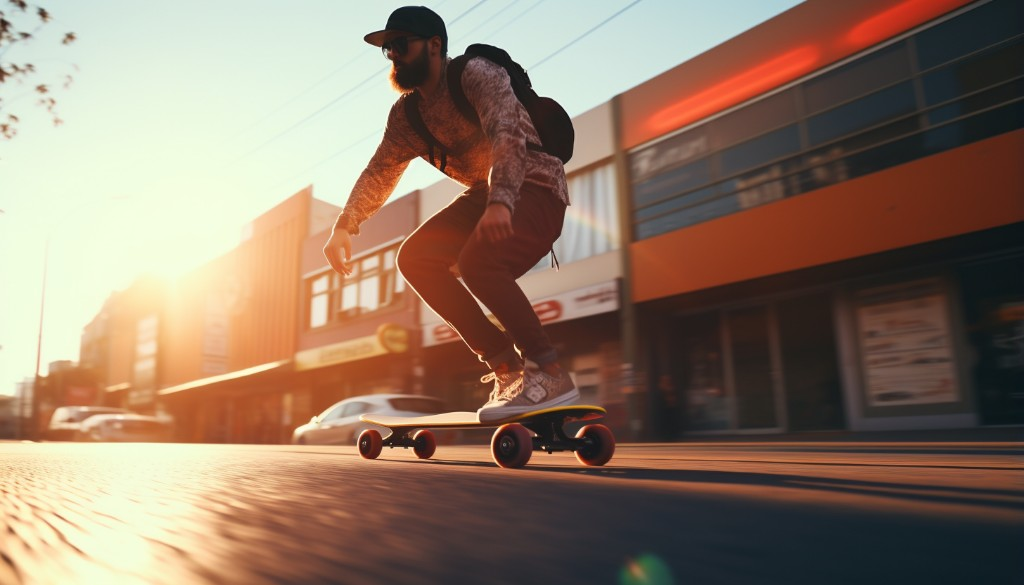Imagine the rush of freedom and the thrill of the ride as you master the art of electric skateboarding tricks. That feeling is within your reach, whether you’re a novice or a seasoned rider looking to elevate your game. This comprehensive guide will serve as your roadmap, beginning with the fundamentals of electric skateboarding and progressing through to advanced tricks. We’ll prioritize safety, help you know your board like the back of your hand, and guide you towards successfully executing both basic and advanced maneuvers. This journey of progression will not only improve your skills but also amplify the joy and exhilaration that electric skateboarding can offer.
What we’ll cover:
- Electric Skateboarding Basics
- Safety First in Electric Skateboarding
- Becoming One with Your Board
- Basic Tricks to Master
- Advanced Tricks: Taking it to the Next Level
- Maintenance Tips
So, strap on your helmet, and let’s embark on this electrifying adventure towards mastering the world of electric skateboarding tricks!
Understanding the Basics of Electric Skateboarding
When it comes to electric skateboarding, there’s a lot to get a handle on, especially for beginners. Unlike regular skateboarding, an electric skateboard gives you extra power and speed, offering an entirely new way to cruise the streets. The most significant difference between regular skateboarding and electric skateboarding is that the latter is powered by an electric motor. This small but crucial feature has wholly revolutionized the world of skateboarding.
Technology in electric skateboarding deserves a shout out too! From battery-powered boards to remote control features and smartphone apps, the tech aspect of electric skateboarding is undeniably impressive. The beginner’s guide to electric skateboarding starts with understanding this technology and how it elevates the skateboarding experience.
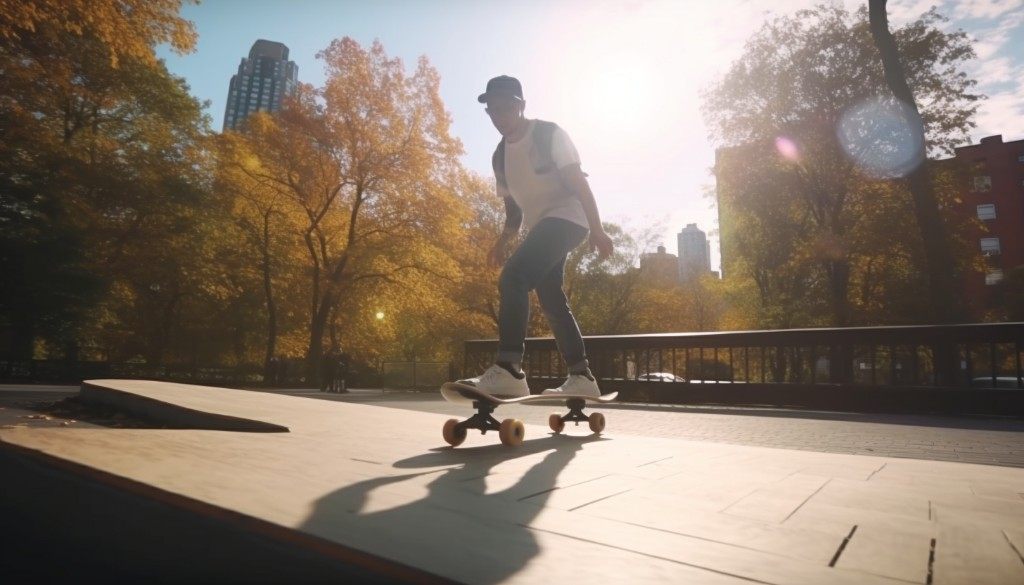
Even though the electric skateboard might seem intimidating at first, the learning curve isn’t as steep as you might think. With some practice and patience, you’ll be mastering the art of electric skateboarding in no time.
The Importance of Safety in Electric Skateboarding
Every sport comes with its own set of risks, and electric skateboarding is no exception. This is why safety gear is your best companion when you’re hitting the streets with your board. In fact, electric skateboard safety should be your number one priority.
From helmets to knee pads and elbow guards, there’s a range of personal protective equipment for electric skateboarding that you should invest in. Don’t forget to buy a helmet for electric skateboarding as it’s compulsory and non-negotiable!
Road safety for electric skateboarding is another essential topic. Whether it’s understanding traffic rules or being aware of pedestrians and other vehicles on the road, it’s crucial to stay informed and cautious.
Getting Acquainted with Your Electric Skateboard
Like any new gadget or vehicle, familiarizing yourself with your electric skateboard is key to mastering it. It’s not just about learning to ride; it’s also about understanding the components that make up your board.
From motors and batteries to deck types and wheels, every component of an electric skateboard serves a specific function, and knowing how they all come together will surely enhance your riding experience.
Maintenance is crucial for the longevity and performance of your electric skateboard. This includes tasks like battery maintenance, which involves regular charging and avoiding over-charging to extend its lifespan.
The weight of the rider can also affect the performance of an electric skateboard. As a rule of thumb, lighter riders can achieve higher speeds and longer battery life than heavier riders. Hence, weight and electric skateboarding performance are closely related.
Choosing an electric skateboard for beginners might seem daunting with so many options available in the market. Some factors to consider include your skill level, the type of terrain you plan to ride on, your budget, and the board’s features and specifications.
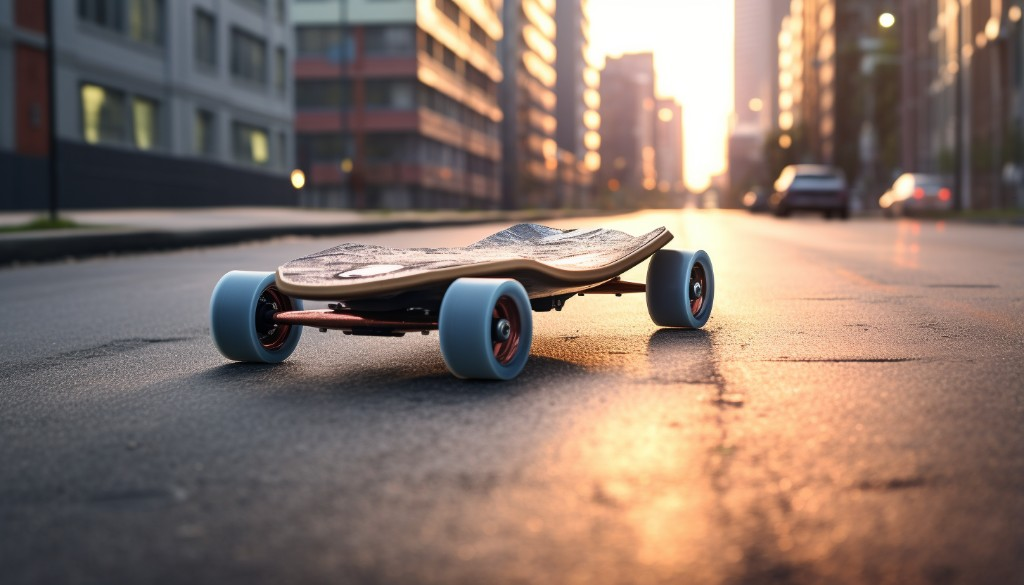
In short, getting acquainted with your electric skateboard goes beyond just learning to ride; it involves understanding its components, maintenance procedures, and choosing the right board for your needs.
Understanding Remote Control Handling and Speed Control
Grasping the Art of Remote Control Handling
The first step in mastering an electric skateboard is understanding the workings of the remote control, more specifically, remote control handling. This small device controls your board’s every move, from speeding up to stopping. It’s essential to familiarize yourself with its buttons and features.
Try to practice using your remote control while standing still before taking a ride. This will help you get the hang of the controls without the risk of falling. Remember, the key to successful remote control handling is not to grip it too tightly. Keeping a relaxed hold allows for more precise movement.
Gaining Command Over Speed Control
Speed control is another crucial aspect of electric skateboarding. Managing your speed well ensures both your safety and enjoyment of the ride. Just like a gas pedal in a car, the throttle on your remote control determines your speed. Apply a gentle touch rather than forceful pushing to smoothly accelerate or decelerate. Always remember, the higher the speed, the greater the risk, so start slow and gradually increase your pace as you gain confidence.
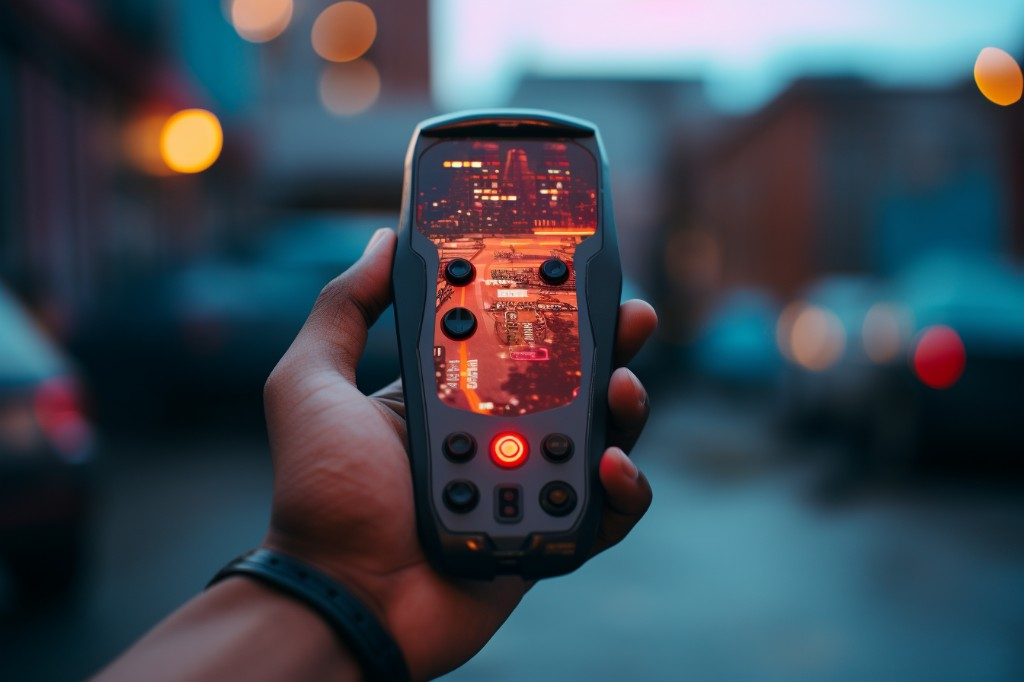
Mastering the Basic Electric Skateboard Tricks
If you’re interested in exploring electric skateboard tricks, you’re in the right place. We’ll start with some of the most basic electric skateboard tricks that are perfect for beginners. The first trick we’ll cover is the shove-it trick. This trick involves spinning the board 180 degrees under your feet. The key to landing this trick lies in foot positioning. Here’s how you can do it:
- Stand on the board with your back foot on the tail and your front foot across the deck.
- Push down on the tail while jumping up.
- As you jump, use your back foot to scoop the tail around.
- Land back on the board after it has spun 180 degrees.
Next in line is the kickflip trick, another classic among basic electric skateboard tricks. This trick involves flipping the board in mid-air and landing back on it. The technique requires precise toe positioning for tricks like these. Here’s what you need to do:
- Set up your feet like you would for an ollie, but with your front foot slightly angled.
- Pop your board and slide your front foot up as if going for an ollie.
- At the top of your motion, flick your front foot out and off the edge of the skateboard.
- Allow the skateboard to flip underneath you, then land on it once it has completed a full flip.
Last but not least, if you’re riding a smaller board, there are specific penny board tricks you can also try out. These tricks are similar to those performed on regular skateboards, but the smaller size of penny boards may require some adjustment in foot positioning.
Preparing Yourself for Advanced Electric Skateboard Tricks
From Basic to Advanced: Upgrading Your Trick Repertoire
Electric skateboarding is an opportunity to showcase your skills and style. Improving your electric skateboard skills requires consistent practice and patience. If you’re a beginner, start with basic electric skateboard tricks like manuals and kick turns. As your confidence builds, slowly progress towards more advanced maneuvers like ollies and shuvits.
Avoiding Common Beginner Mistakes
While learning new tricks is exciting, being aware of common mistakes beginners make when riding an electric skateboard can save you from potential injuries. Some of these mistakes include not wearing proper safety gear, ignoring the importance of balance, and attempting advanced tricks without mastering the basics first. It’s also essential to practice in a safe, appropriate space, away from traffic and other hazards.
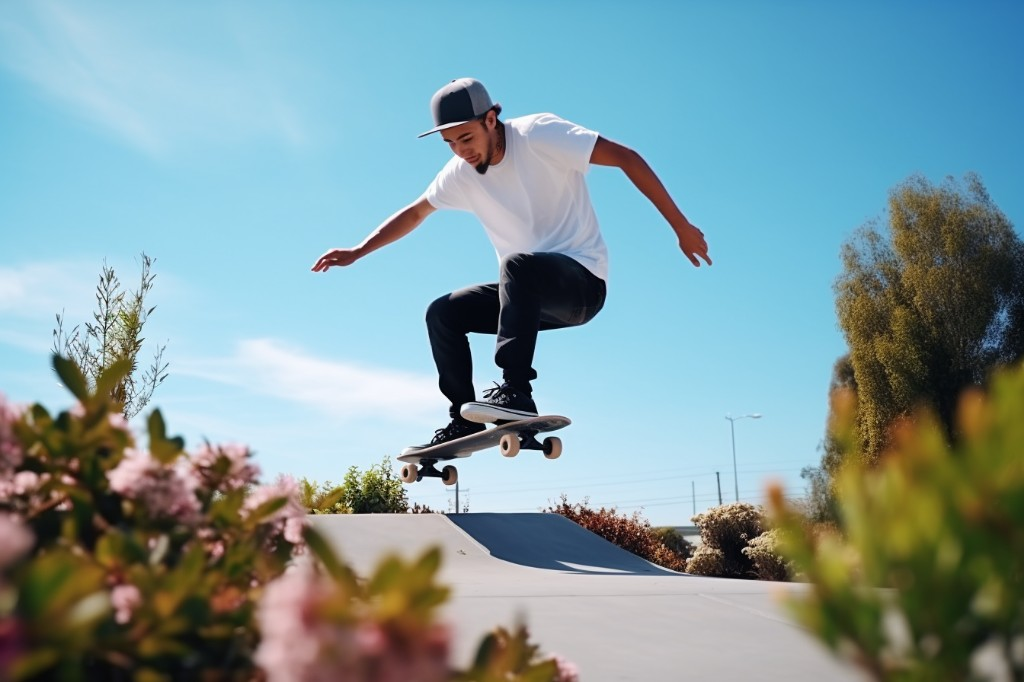
Advanced Electric Skateboard Tricks for Beginners
Now that you’re acquainted with basic electric skateboard tricks, it’s time to step it up a notch. There are several beginner electric skateboard tricks that are a little more advanced and can help in improving electric skateboard skills.
One such trick is the pop shuvit. This trick is similar to the shove-it trick but involves popping the board into the air before spinning it. Here’s a step-by-step guide:
- Position your back foot on the tail of the skateboard and your front foot across the deck.
- Push down on the tail and jump, lifting your front foot slightly.
- As you lift, kick your back foot out to initiate the board’s spin.
- Once the board has completed a 180-degree spin beneath you, catch it with your back foot and land.
Another trick that’s great for learning electric skateboard tricks is the heelflip. This trick is similar to a kickflip but involves flipping the board with your heel. Here’s how to do it:
- Position your back foot on the tail and your front foot angled across the deck.
- Pop an ollie and kick out with your heel rather than your toes.
- Let the board flip under you then land back on it once it’s completed a full flip.
Remember, these tricks require practice and patience, so don’t feel disheartened if you don’t land them immediately.
Balancing on an Electric Skateboard
When performing any electric skateboard tricks, maintaining balance is crucial. One method to improve balancing on an electric skateboard is utilising the center of mass balance technique. In essence, this technique requires you to shift your body weight over the center of the skateboard, which can help make performing tricks easier.
Here are some steps to enhance balance using this technique:
- Stand on your skateboard and position your feet shoulder-width apart over the trucks of the board.
- Lower your center of gravity by bending your knees slightly.
- Lean forward slightly when accelerating and lean back when decelerating.
- Keep your shoulders level with the ground and look straight ahead.
Remember that mastering balance is just as important as learning electric skateboard tricks themselves, as it ensures safety while performing these stunts.
Exploring Different Electric Skateboard Riding Styles
Riding Styles: Choosing Your Own Path
Every electric skateboard rider has a unique style that matches their personality and comfort level. Some riders may prefer a laid-back style where they cruise at slower speeds, soaking in the surroundings. Others might opt for aggressive riding styles that involve high speeds, sharp turns, and daring tricks.
The key here is to experiment with different techniques until you find one that suits you best. Just ensure that you’re always prioritizing safety and observing local laws when choosing your riding style.
Factors Influencing Ride Smoothness
Ride smoothness is influenced by several factors including your board’s wheels, trucks, deck design, and most importantly, your skills as a rider. Larger and softer wheels can absorb shocks better, making for a smoother ride. Loosening or tightening your trucks can also affect stability and maneuverability.
Practicing weight shifting and foot positioning can greatly enhance your ride smoothness as well. Remember, achieving a smooth ride takes time and practice. So be patient and enjoy every step in this exhilarating journey of electric skateboarding!

Outdoor Electric Skateboarding Tips
Riding an electric skateboard outdoors is a thrilling and liberating experience. However, it’s not always smooth sailing. You need to be aware of the different types of road surfaces and how they can impact your ride. Whether you’re cruising along a beautifully paved bike lane or manoeuvring on a gravel road, different surfaces will present unique challenges and require different riding techniques.
Riding on Smooth Surfaces
City riders are often blessed with beautifully smooth and flat road surfaces. It’s the perfect environment for outdoor electric skateboarding. When you’re riding on this kind of surface, you have the advantage of maintaining a consistent speed and making sharp turns with ease. But, don’t let that fool you into complacency. Always be alert for sudden changes such as potholes and speed bumps.
Tackling Rough Terrain
Heading off-road? Be prepared for a rough ride! Gravel, grass, and dirt tracks offer a whole new set of challenges. When it comes to these terrains, adopting an agile stance is crucial. Flex your knees and be ready to shift your weight according to the terrain. Remember, the key to a smooth ride on rough surfaces lies in your ability to balance and adapt to changing conditions.

Electric Skateboarding in Wet Conditions
Water and electricity usually aren’t the best of friends. If you come across wet or slippery road surfaces while skateboarding, proceed with caution. Many electric skateboards aren’t designed to deal with wet conditions. Apart from potential damage to the board, you also risk slipping or skidding. Be sure to dry off your skateboard as soon as you get to your destination to prevent any water damage.
Road surfaces and electric skateboarding go hand-in-hand. The more you understand about the terrain, the better prepared you’ll be for a safe and enjoyable ride.
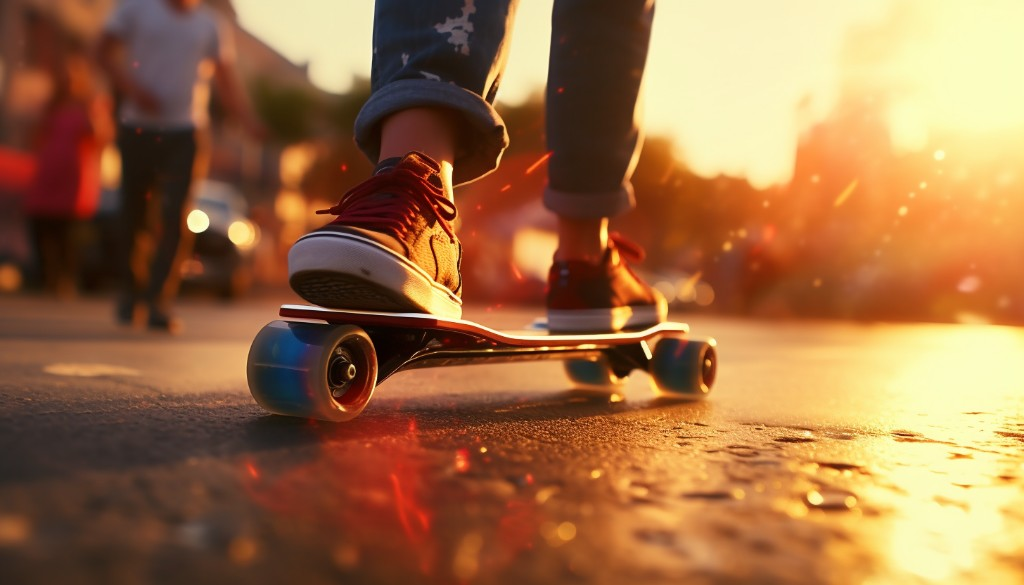
Transportation Laws for Electric Skateboarding
Now let’s shift gears and dive into the legal side of things. Whizzing around on your board may be fun, but it’s also important to understand the transportation laws for electric skateboarding.
Different regions have different rules when it comes to E-Skateboards. In some places, they’re classified as ‘Personal Light Electric Vehicles’, meaning they’re only allowed on private property unless your city or state expressly permits their use on public paths or roads.
Helmet Laws
Most places require riders to wear helmets, especially those under the age of 18. This is a no-brainer – safety should always come first!
Road Use
Where you can ride your E-Skateboard can vary greatly from place to place. Some cities allow them on bike lanes and sidewalks, while others restrict them to private property only. Always check local legislation before setting off!
Speed Limits
Just like regular vehicles, electric skateboards often have speed limits too, which may vary depending on where you are. Staying within these limits isn’t just about following the rules; it’s also about ensuring your safety and that of those around you.
It’s crucial to respect these rules not just for legal reasons, but also for your safety and the safety of others around you.

Maintaining and Protecting Your Electric Skateboard
An electric skateboard is a significant investment, so you’ll want to take good care of it! Regular electric skateboard maintenance ensures that your board stays in top shape and prolongs its lifespan.
Regular Cleaning
Dirt and dust can accumulate quickly when you’re travelling outdoors. Regular cleaning of your board is essential – paying particular attention to the wheels and deck. Inspect the wheels for any dirt or debris that may be stuck as this could cause jarring, leading to an accident.
Checking Battery Life
Battery life plays a significant role in maintaining performance levels of your board. Regularly check the battery electric skateboard condition to ensure it is in good health. Overcharging or depleting the battery completely can harm its capacity over time. Also be sure to check for any signs of swelling or leaks, and consult a professional if any defects are detected.
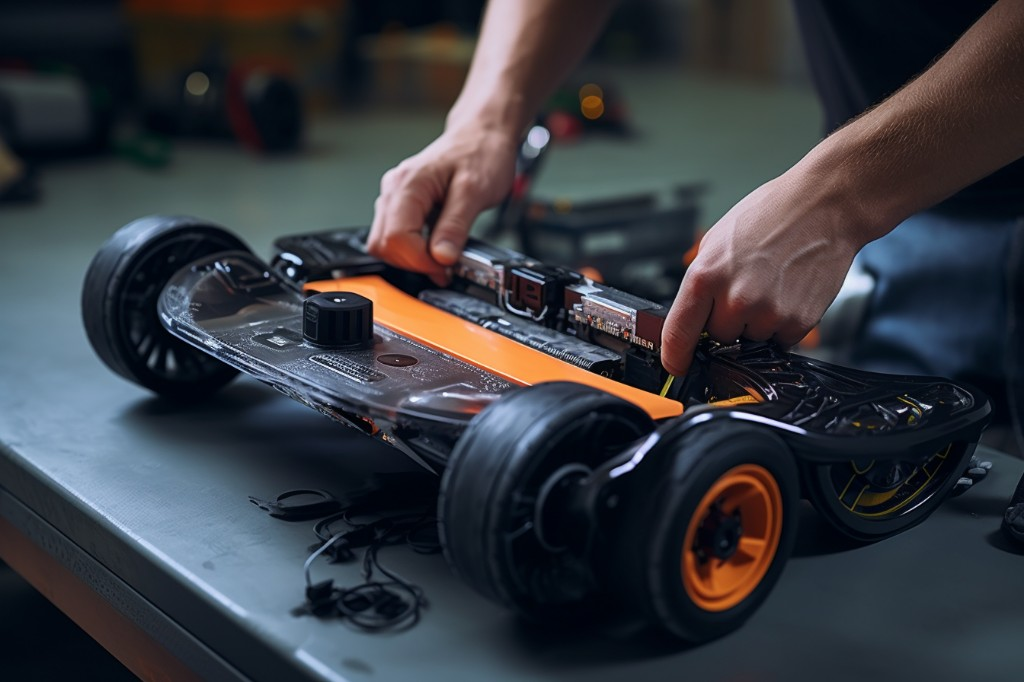
Inspection and Maintenance
Make it a habit to perform an overall inspection of your board every once in a while. Check if the screws are tight, if the wheels are rotating smoothly, if there are any cracks on the deck, etc. If you spot anything out of the ordinary, it’s time for some electric skateboard maintenance!
Your electric skateboard is your trusty steed in your urban adventures. It deserves your care and attention so it can continue rolling smoothly for many rides to come.
Closing Thoughts
Electric skateboarding, while challenging, can be extremely rewarding and enjoyable for those who invest their time and effort into understanding its intricacies. It begins with grasping the basics, which sets a solid foundation for mastering both basic and advanced tricks later on. The importance of safety cannot be overstated – equipping oneself with comprehensive knowledge about electric skateboard handling, remote control and speed regulation, and prudently wearing safety gear are crucial to prevent accidents. As you advance in your skills, exploring and adapting different riding styles adds to the thrill of the sport. Remember, the journey of growth is continuous, with potential improvements always on the horizon. With the right approach and attitude, electric skateboarding can be an incredible outdoor adventure.
Frequently Asked Questions
What are some easy tricks for beginners on an electric skateboard?
For beginners stepping into the world of electric skateboarding, tricks such as tic-tacs or manuals are a good starting point. Tic-tacs involve shifting weight from the front to the back foot to propel the board forward without pushing off the ground. A manual, on the other hand, involves balancing on either the front or back wheels while the board is moving.
How do I maintain balance while performing tricks on an electric skateboard?
Maintaining balance while performing tricks on an electric skateboard involves distributing your weight evenly across both feet, bending your knees slightly for stability, and keeping your eyes focused ahead rather than on your feet. Practice is key; starting with simpler tricks will gradually build confidence and improve balance over time.
What safety gear should I wear while riding an electric skateboard?
While riding an electric skateboard, it’s essential to wear a helmet to protect your head from possible injuries. Knee pads and elbow pads can safeguard against scrapes and bruises during falls. Wrist guards protect your wrists from impacts and sprains, while padded shorts or pants can help cushion any tumbles.
How do I maintain my electric skateboard’s battery life?
To maintain your electric skateboard’s battery life, ensure you’re charging it regularly, even when not in use. Avoid completely draining the battery and don’t expose it to extreme temperatures. Also, regular cleaning and inspection can help identify potential issues early.
What are the transportation laws related to electric skateboarding?
Transportation laws related to electric skateboarding vary by location. Generally, riders must adhere to speed limits and may be required to use designated lanes or paths. In some places, riders must be of a certain age and helmets may be legally required. It’s best to check with local law enforcement or transport departments for specific rules in your area.



